Unveiling Zimbabwe’s Wonders: Mana Pools Safari, National Gallery Art, and Museum of Human Sciences
Introduction:
Nestled along the mighty Zambezi River in northern Zimbabwe, Mana Pools National Park is a pristine wilderness area renowned for its breathtaking landscapes, diverse wildlife, and unparalleled opportunities for outdoor adventure. This article explores the history, natural wonders, and unique experiences that make Mana Pools a must-visit destination for nature enthusiasts and safari-goers alike.
A Natural Heritage:
Established as a national park in 1963, Mana Pools encompasses an area of approximately 2,500 square kilometers (965 square miles) of untamed wilderness. Its name, “Mana,” means “four” in the local Shona language, referring to the four large pools formed by the meandering Zambezi River during the rainy season. These pools attract a rich array of wildlife, making Mana Pools one of Africa’s premier safari destinations.
Abundant Wildlife:
Mana Pools is home to a staggering diversity of wildlife, including large herds of elephant, buffalo, zebra, and antelope that gather along the riverbanks to quench their thirst. The park is also renowned for its predators, such as lions, leopards, and spotted hyenas, as well as abundant birdlife, including fish eagles, kingfishers, and colorful bee-eaters. Visitors to Mana Pools can experience unforgettable wildlife encounters against the backdrop of breathtaking scenery.
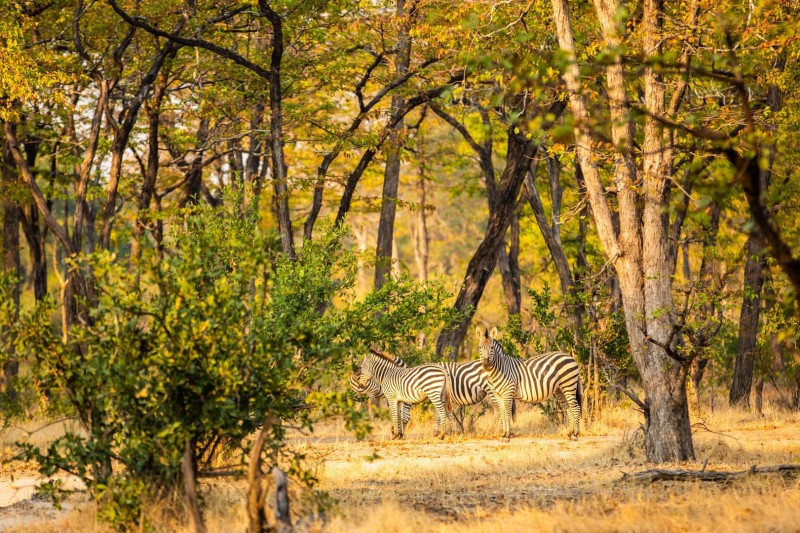
Spectacular Landscapes:
The landscape of Mana Pools is characterized by lush floodplains, dense riverine forests, and ancient baobab trees that dot the savannah. The towering escarpment of the Zambezi Rift Valley provides a dramatic backdrop, creating stunning vistas and photographic opportunities at every turn. Whether exploring on foot, by vehicle, or on a canoe safari along the Zambezi River, visitors are treated to scenes of unparalleled natural beauty.
Unique Safari Experiences:
Mana Pools offers a range of safari experiences tailored to suit every adventurer’s preferences. Guided game drives provide opportunities to encounter the park’s iconic wildlife up close, while walking safaris offer a more intimate and immersive way to explore the bush. For the more adventurous, canoe safaris along the Zambezi River allow visitors to navigate tranquil waters teeming with hippos, crocodiles, and diverse bird species.
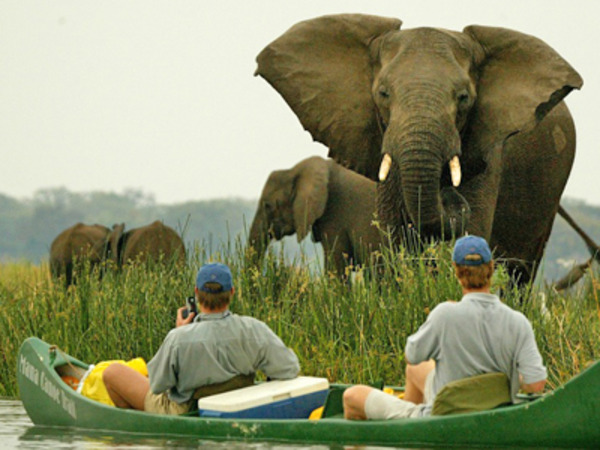
Conservation and Sustainability:
As a UNESCO World Heritage Site, Mana Pools is committed to conservation and sustainable tourism practices. The park’s management prioritizes the protection of its natural resources and the preservation of its delicate ecosystems, working closely with local communities and conservation organizations to ensure the long-term viability of this precious wilderness area.
Visitor Facilities:
Mana Pools offers a range of visitor facilities, including campsites, lodges, and luxury tented camps that provide comfortable accommodations amidst the wilderness. These facilities cater to a variety of budgets and preferences, allowing visitors to experience the magic of Mana Pools in style and comfort.
Categories:
- National Park: Protected area managed for conservation and recreation, showcasing natural landscapes and biodiversity.
- Game Reserve: A designated area for the protection and conservation of wildlife, often focused on specific species or habitats.
- Wildlife Conservancy: A community-based conservation area dedicated to preserving and protecting wildlife and their habitats.
- World Heritage Site: A place of significant cultural or natural importance recognized by UNESCO for its universal value to humanity.
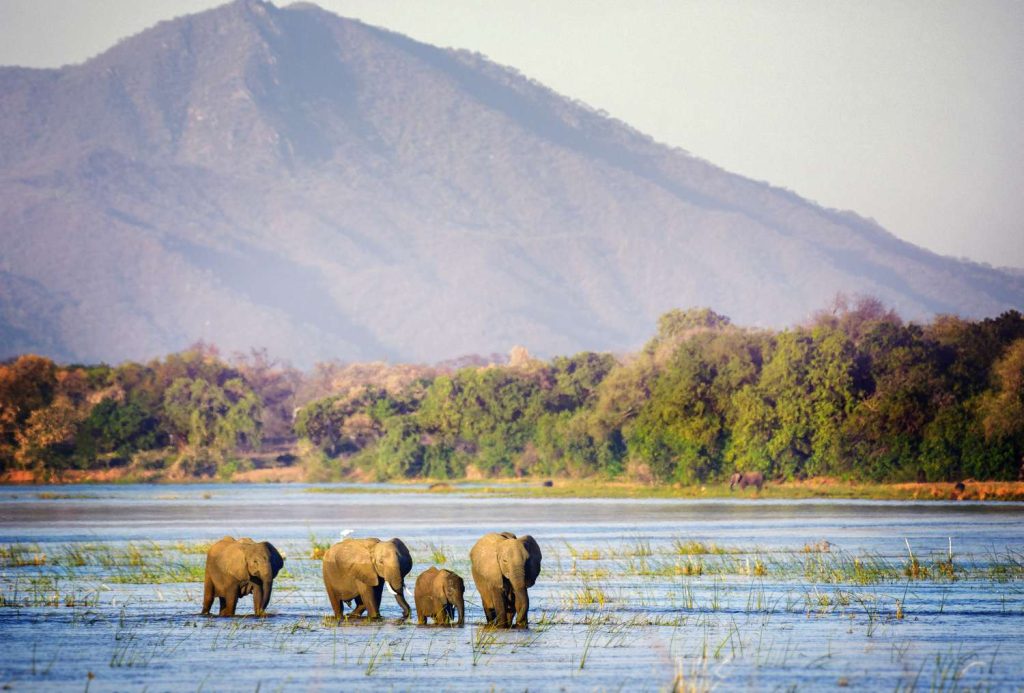
Activities Types:
- Guided Safaris: Expert-led excursions exploring wildlife and natural habitats, providing insights into local ecology and conservation efforts.
- Game Drives: Motorized tours through wildlife-rich areas for observing and photographing animals in their natural habitat.
- Camping: Overnight stays in designated campsites within protected areas, immersing visitors in the sights and sounds of the wilderness.
- Fishing: Angling activities in rivers, lakes, or designated fishing spots, allowing visitors to catch various fish species.
- Birding Safaris: Guided tours focused on birdwatching, highlighting the diverse avian species found in a particular area.
- Canoeing Safaris: Exploratory journeys by canoe or kayak along rivers and waterways, offering a unique perspective on wildlife and landscapes.
- Guided Walks: Educational walks led by knowledgeable guides, providing opportunities to learn about local flora, fauna, and ecosystems firsthand.
These categories and activities types offer a range of experiences for nature enthusiasts, wildlife lovers, and adventure seekers alike, promoting conservation, education, and sustainable tourism in natural areas.
Conclusion:
Mana Pools National Park is a sanctuary for both wildlife and humans alike, offering a sanctuary where visitors can reconnect with nature, marvel at the wonders of the African bush, and create memories that will last a lifetime. Whether embarking on a safari adventure, soaking in the tranquility of the Zambezi River, or simply immersing oneself in the sights and sounds of the wild, Mana Pools promises an experience like no other—a true celebration of the beauty and diversity of the natural world.
The National Gallery of Zimbabwe: Celebrating Art, Cultivating Creativity
Introduction:
Nestled in the heart of Harare, the National Gallery of Zimbabwe stands as a beacon of artistic expression and cultural heritage. Established in 1957, the gallery has played a pivotal role in promoting Zimbabwean art and nurturing creativity. This article delves into the history, mission, and significance of the National Gallery of Zimbabwe.
Founded under the visionary leadership of British citizen Frank McEwen, the gallery traces its roots back to the establishment of the National Gallery of African Modern Art in Rhodesia. McEwen’s pioneering efforts in spotlighting Shona Sculpture laid the foundation for what would become a cultural landmark in Zimbabwe.
The gallery’s illustrious history is punctuated by significant milestones, including its official inauguration by Queen Elizabeth The Queen Mother in 1957 and a memorable visit by Queen Elizabeth II during the sixth Zimbabwe Heritage Exhibition in 1991.
Over the years, the NGZ has been steered by distinguished curators and directors, each contributing to its rich legacy. From Frank McEwen’s transformative tenure to the stewardship of luminaries like Roy Guthrie, the gallery has remained at the forefront of artistic innovation and curation.
At the helm of the NGZ today are Executive Director Doreen Sibanda and Curator Raphael Chikukwa, whose leadership ensures the gallery’s continued relevance and impact. The esteemed Board of Trustees, which includes acclaimed sculptor Dominic Benhura, provides strategic guidance and oversight, further cementing the gallery’s commitment to excellence.
Originally conceived as a national institution representing the united Federation of Southern Rhodesia, Northern Rhodesia, and Nyasaland, the NGZ has evolved into a beacon of cultural identity and artistic expression. Despite early financial challenges, the gallery’s founders remained steadfast in their belief that art galleries are essential pillars of community life—a sentiment echoed by Sir Stephen Courtauld in 1954.
Today, as the NGZ commemorates its fiftieth anniversary, it stands as a testament to the enduring power of art to inspire, provoke, and unite. Through its diverse exhibitions, educational programs, and community outreach initiatives, the National Gallery of Zimbabwe continues to enrich the cultural fabric of the nation, embodying the spirit of creativity and resilience that defines Zimbabwean identity.

History and Legacy:
Founded by a group of visionary artists and cultural enthusiasts, the National Gallery of Zimbabwe has a rich history spanning over six decades. From its inception, the gallery has been committed to showcasing the diverse artistic traditions and contemporary voices of Zimbabwe, fostering dialogue and understanding through the universal language of art.
Mission and Objectives:
The mission of the National Gallery of Zimbabwe is to preserve, promote, and celebrate Zimbabwean art and culture while providing a platform for artists to showcase their work and engage with audiences. The gallery aims to inspire creativity, stimulate critical thinking, and foster appreciation for the visual arts among both local and international communities.
Collections and Exhibitions:
The National Gallery of Zimbabwe boasts an extensive collection of artworks spanning various genres, styles, and mediums. Its permanent collection features works by renowned Zimbabwean artists as well as emerging talent, reflecting the country’s cultural diversity and artistic innovation. In addition to its permanent collection, the gallery hosts rotating exhibitions that explore a wide range of themes and topics, from traditional and contemporary art to social and political commentary.
Highlights of the Gallery:
- Contemporary Art: The gallery showcases cutting-edge contemporary art by Zimbabwean artists, offering insights into the country’s dynamic cultural landscape and the issues that shape society.
- Traditional Art: Visitors can explore traditional artworks and crafts that celebrate Zimbabwe’s rich cultural heritage, including sculptures, paintings, textiles, and ceramics inspired by indigenous traditions and rituals.
- Educational Programs: The National Gallery of Zimbabwe offers a variety of educational programs and workshops for students, educators, and the general public. These programs aim to foster creativity, enhance artistic skills, and promote art appreciation through hands-on experiences and interactive learning.

Community Engagement and Outreach:
The gallery is actively engaged in community outreach and cultural exchange initiatives, collaborating with local schools, community groups, and international partners to extend its reach and impact. Through outreach programs, artist residencies, and cultural events, the gallery seeks to democratize access to art and cultivate a sense of pride and ownership among Zimbabweans.
Digital Initiatives:
In the digital age, the National Gallery of Zimbabwe has embraced technology to expand its audience and enhance the visitor experience. Through virtual exhibitions, online galleries, and social media platforms, the gallery reaches audiences around the world, fostering global connections and dialogue.
Contact Information for the National Gallery of Zimbabwe:
Address: Park Ln, Harare, Zimbabwe
Phone: +263 24 2704666
Email: info@momaa.org
Zip/Post Code/P.O. Box: 0000
Feel free to reach out to us with any inquiries, exhibition proposals, or general information. We look forward to welcoming you to the National Gallery of Zimbabwe and sharing the vibrant world of contemporary art and cultural heritage with you.

Conclusion:
As a custodian of Zimbabwe’s artistic heritage and a hub of creative expression, the National Gallery of Zimbabwe occupies a unique place in the cultural landscape of the country. Through its diverse collections, dynamic exhibitions, and educational programs, the gallery continues to inspire, educate, and enrich the lives of all who visit its hallowed halls.
Zimbabwe Museum of Human Sciences: Preserving Heritage, Inspiring Understanding
Introduction:
Nestled in the heart of Zimbabwe’s capital, Harare, the Zimbabwe Museum of Human Sciences stands as a guardian of the nation’s rich cultural heritage and a beacon of knowledge and understanding. This article delves into the museum’s mission, collections, and the role it plays in preserving the past and shaping the future.
Location:
Location: Civic Centre, Rotten Row, CY 33, Causeway Harare, Zimbabwe
Area: Harare Central, near Samora Machel Avenue
Mission and Purpose:
The Zimbabwe Museum of Human Sciences is dedicated to collecting, preserving, and interpreting artifacts and cultural materials that showcase Zimbabwe’s diverse history and heritage. Its mission is to foster appreciation and understanding of the country’s cultural, archaeological, and anthropological legacy among both local and international audiences.
Collections and Exhibitions:
The museum boasts a diverse range of collections, spanning archaeology, anthropology, ethnography, and natural history. Visitors can explore exhibits showcasing ancient artifacts, traditional crafts, historical documents, and interactive displays that offer insights into Zimbabwe’s precolonial, colonial, and post-independence eras.
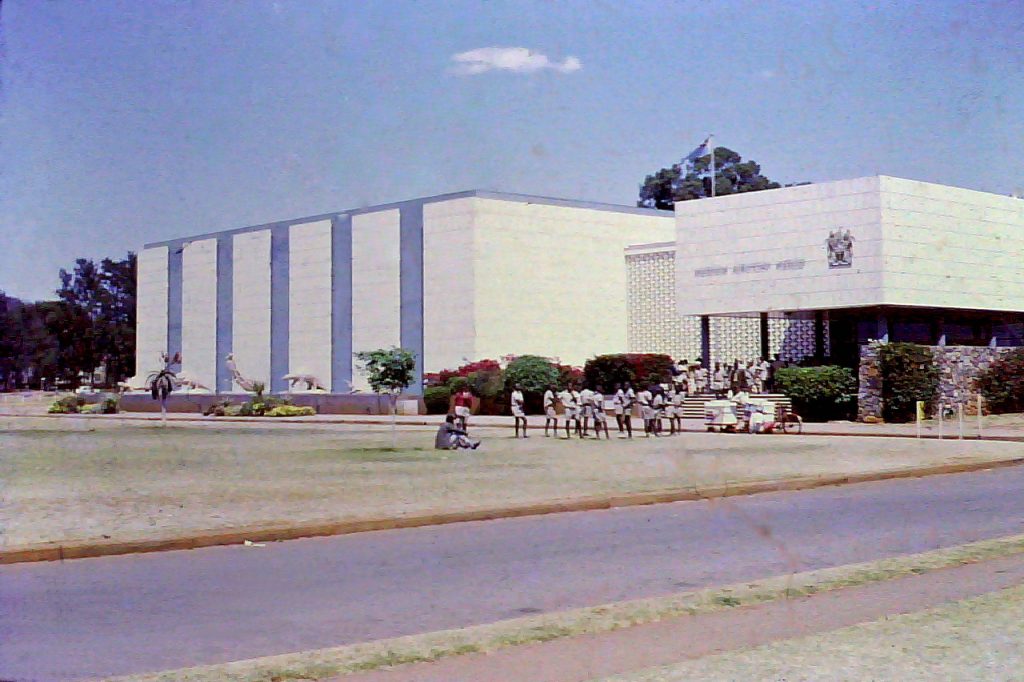
Highlights of the Museum:
- Archaeological Treasures: The museum’s archaeological collections include artifacts from Zimbabwe’s ancient civilizations, such as pottery, tools, and artwork that provide glimpses into the daily lives and cultural practices of past societies.
- Cultural Artifacts: Visitors can admire a rich array of cultural artifacts, including traditional clothing, musical instruments, and ceremonial objects used by various ethnic groups across Zimbabwe. These artifacts offer a window into the country’s vibrant cultural tapestry and the diversity of its peoples.
- Natural History Exhibits: The museum also features exhibits on Zimbabwe’s natural history, including displays of indigenous flora and fauna, geological specimens, and interactive installations that highlight the country’s unique ecosystems and biodiversity.
Exhibits and Facilities:
- Library: A treasure trove of knowledge awaits within the museum’s library, providing visitors with access to a wealth of scholarly resources and research materials.
- Exhibition Galleries: Step into a world of discovery as you explore the museum’s exhibition galleries, featuring captivating displays that illuminate various aspects of Zimbabwean and African culture.
- Model Shona Village: Experience the vibrant traditions of the Shona people firsthand with a visit to the museum’s model Shona Village, offering a glimpse into the daily life and customs of this indigenous community.
- Ethnographic and Archaeological Collections: Delve into the fascinating realms of anthropology and archaeology with the museum’s extensive collections, showcasing artifacts and relics spanning millennia of human history.
- Public Gallery of African Modern Art: Immerse yourself in the vibrant world of African contemporary art at the museum’s public gallery, featuring striking wildlife exhibits and thought-provoking works by talented artists from across the continent.
Educational Programs and Outreach:
In addition to its exhibitions, the Zimbabwe Museum of Human Sciences offers a range of educational programs and outreach initiatives aimed at engaging audiences of all ages. These programs include guided tours, lectures, workshops, and educational resources designed to enhance understanding and appreciation of Zimbabwe’s cultural heritage.
Research and Conservation:
The museum is actively involved in research and conservation efforts aimed at preserving Zimbabwe’s cultural and natural heritage for future generations. Its team of experts conducts archaeological excavations, ethnographic studies, and conservation projects to safeguard and document valuable cultural assets.
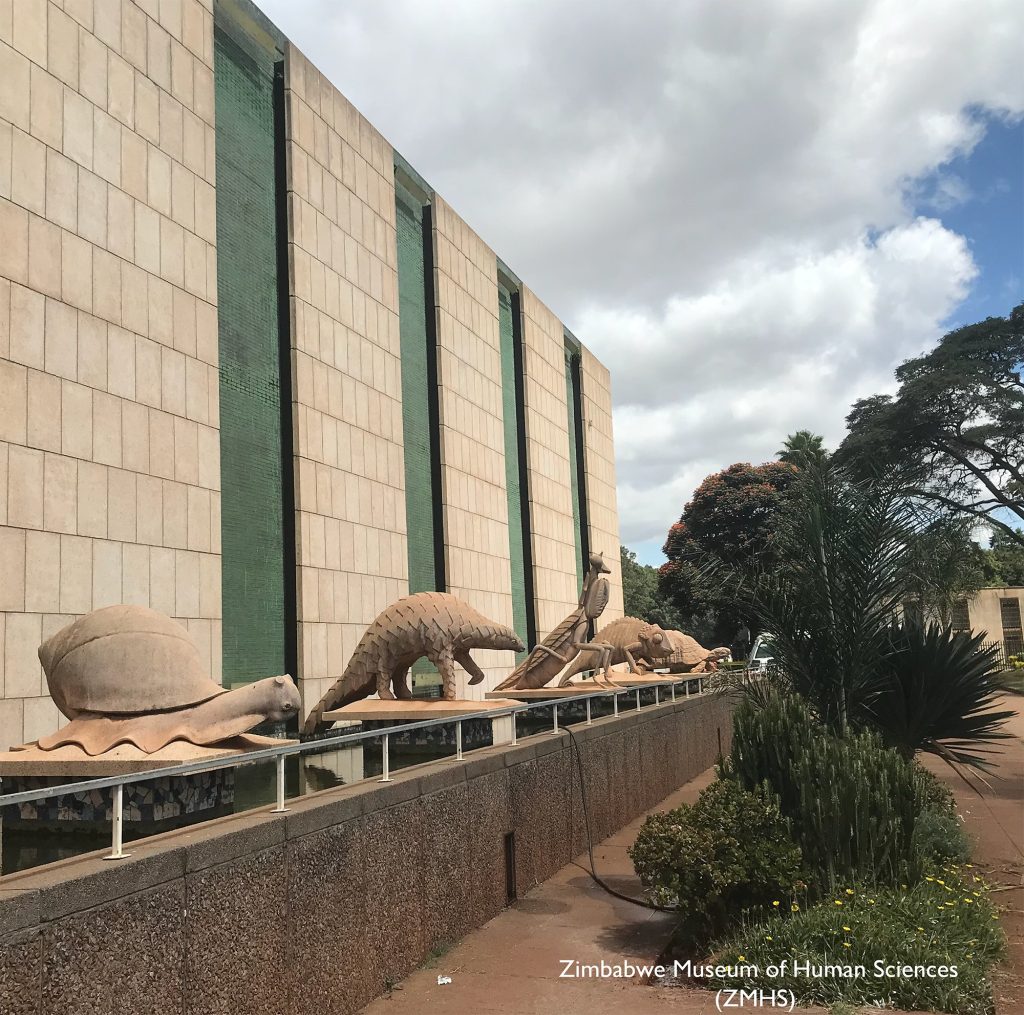
Community Engagement and Collaboration:
The Zimbabwe Museum of Human Sciences collaborates with local communities, academic institutions, and cultural organizations to promote dialogue, exchange knowledge, and celebrate Zimbabwean heritage. Through community outreach programs, exhibitions, and partnerships, the museum seeks to ensure that its collections and resources are accessible and relevant to all Zimbabweans.
Entry Fees:
- For Residents: Adults: $3.00 | Children: $1.00
- For Non-Residents: Adults: $10.00 | Children: $5.00
Contact Information:
- Address: Burnett Way, Harare, Zimbabwe
- Phone: +263 24 2751797
- Email: info@momaa.org
Embark on a journey of discovery and enlightenment at the Zimbabwe Museum of Human Sciences, where the past comes alive and the spirit of Africa thrives.
Conclusion:
As a custodian of Zimbabwe’s cultural legacy, the Zimbabwe Museum of Human Sciences plays a vital role in preserving, interpreting, and sharing the stories of the past. Through its diverse collections, educational programs, and collaborative initiatives, the museum serves as a bridge between the past and the present, inspiring curiosity, fostering understanding, and enriching the cultural landscape of Zimbabwe.
Related Reading Unveiling Zimbabwe’s Treasures: National Archives, Bvumba Mountains, and Chiremba Rocks
Add a Comment
You must be logged in to post a comment.
